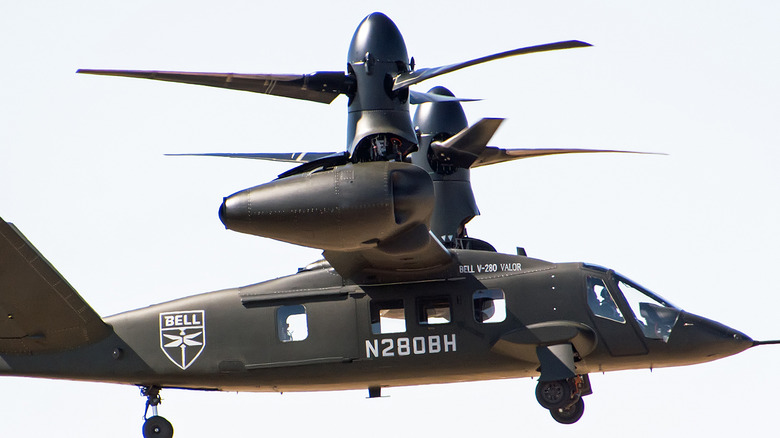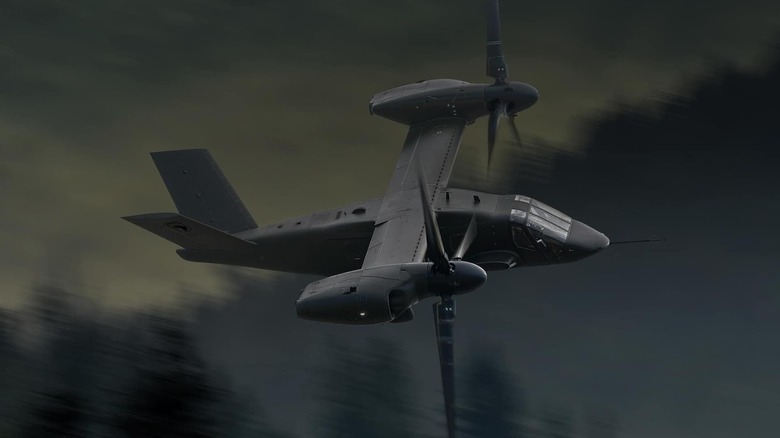Everything We Know About The Next Generation Of U.S. Military VTOL Helicopters
The UH-60 Black Hawk helicopter has been building its iconic status and storied reputation for over 40 years, with the first unit going into service in 1979 for the U.S. Army. While it's served its role well with the U.S. Army operating more than 2,000 units today, it's an understatement to say that technology has changed during the tenure of a helicopter that predates the first release of MS-DOS. For this reason, the U.S. Army launched the Future Long Range Assault Aircraft (FLRAA) program in 2019 to find a suitable replacement for the Black Hawk by 2030. And now we know what that replacement will be.
There were two primary candidates competing to win the FLRAA contract. The first saw The Boeing Company team up with Sikorsky Aircraft — the manufacturer of the Black Hawk, and a part of Lockheed Martin — on an aircraft called the Defiant X. This helicopter featured coaxial rotors, or two rotors mounted one directly above the other and rotating in opposite directions. The second entrant was Bell Textron with the V-280 Valor which instead featured a tiltrotor design (similar to the V-22 Osprey), where rotors mounted to wings can tilt upward for vertical takeoff and landing, but also point forward for airplane-like cruising.
In December 2022, it was Bell's V-280 Valor that was selected for the FLRAA contract, which could be worth as much as $70 billion in the long term, according to Maj. Gen. Robert Barrie during a media roundtable. That's no small amount, so what exactly makes the Valor worth it?
What we know today
When asked what capabilities put the Valor ahead of its competition, Maj. Gen. Barrie declined to go into specifics beyond seeking a "best value approach" that evaluated a wide array of features in combination. Meanwhile, Bell has been scant with details on exactly what specifications can be expected from the Valor. However, there are a few available puzzle pieces that can start to form a rough picture of this aircraft's potential. For example, Bell states that the Valor will offer double the range and double the speed compared to the U.S. Army's current fleet. The UH-60 Black Hawk has a max range of up to 1,200 nautical miles (about 1,380 miles) and a speed of 150 knots (about 172 mph), so the Valor could have a range of around 2,760 miles and a speed near 345 mph.
Bell has also taken a high-tech approach to both the cockpit and maintenance. The fly-by-wire system features a digital cockpit that can give the pilot enhanced visibility in challenging conditions as well as visual references that would otherwise be lacking, making VTOL applications easier to navigate. Additionally, the Rolls-Royce engines are part of the AE 1107 family of engines which have an extensive track record. The Valor's version of this engine — the AE 1107F — will include what Rolls-Royce called an "advanced Infrared Suppression System," ostensibly to help minimize the aircraft's visibility to things like infrared-guided missiles. With so much information under wraps, don't be surprised if in the future we find out the Valor is capable of more than the company is letting on today.

